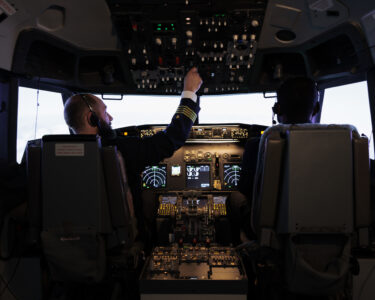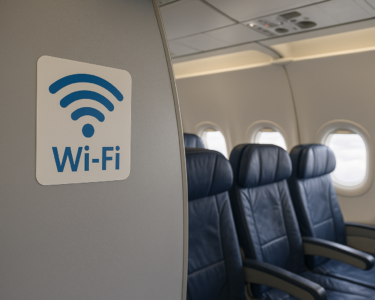ARINC 628, a critical standard in the aviation industry, plays a pivotal role in ensuring reliable communication and interoperability among various aircraft systems.
Developed by Aeronautical Radio, Incorporated (ARINC), this standard has been integral in shaping the architecture of avionics systems for decades.
As the aviation sector rapidly evolves, driven by technological advancements and the increasing demand for enhanced operational efficiency, ARINC 628 is adapting to meet the challenges and opportunities presented by this dynamic landscape.
In this article, we will explore the innovations emerging within ARINC 628 as it responds to new technological advancements.
From the integration of advanced data communication protocols to the adoption of robust cybersecurity measures, these innovations are reshaping how aviation systems function and communicate.
By examining the historical context, recent advancements, and future trends of ARINC 628, we aim to highlight its significance in maintaining safety, reliability, and efficiency in modern aviation.
Ultimately, understanding these developments will underscore the importance of evolving standards to keep pace with the ever-changing demands of the aerospace industry.

Recent Technological Advancements in ARINC 628
The aviation industry is undergoing a transformative shift, fueled by rapid technological advancements that are redefining operational protocols and system architectures.
Several emerging technologies are significantly impacting ARINC 628, enhancing its capabilities and addressing the evolving needs of modern aviation systems. Here, we explore some of the key advancements influencing ARINC 628:
1. Digital Transformation
The shift towards digitalization is one of the most significant trends affecting the aviation sector. As aircraft become increasingly sophisticated, the integration of digital technologies in communication and data management systems is essential.
ARINC 628 is evolving to incorporate digital protocols that enable seamless data exchange and improve the efficiency of avionics systems. This transition allows for enhanced monitoring, diagnostics, and real-time communication, ensuring that operators have access to critical information when needed.
2. Data Analytics and Machine Learning
The adoption of data analytics and machine learning techniques is revolutionizing how aviation systems process and analyze information.
By leveraging these technologies, ARINC 628 can utilize large volumes of data generated by various aircraft systems to optimize performance, predict maintenance needs, and enhance safety. Machine learning algorithms can identify patterns and anomalies in data, enabling proactive decision-making and reducing the risk of system failures.
3. Cybersecurity Enhancements
As aviation systems become more interconnected, the need for robust cybersecurity measures has become paramount. Innovations in ARINC 628 are focusing on implementing advanced security protocols to safeguard against potential threats.
This includes encryption technologies, secure data transmission methods, and real-time threat detection systems that protect critical communication channels from cyberattacks.
By enhancing cybersecurity within ARINC 628, the aviation industry can ensure the integrity and confidentiality of sensitive operational data.
4. Integration of Internet of Things (IoT)
The Internet of Things (IoT) is playing a crucial role in modern aviation, enabling greater connectivity between aircraft systems and ground infrastructure.
ARINC 628 is adapting to accommodate IoT technologies, facilitating real-time data sharing and communication between various components.
This integration allows for improved operational efficiency, enhanced situational awareness, and more informed decision-making, ultimately leading to safer and more reliable flight operations.
5. Advancements in Communication Protocols
Recent developments in communication protocols are also influencing ARINC 628. The introduction of high-speed data links and advanced networking technologies allows for more efficient data transmission and improved bandwidth management.
These advancements enable ARINC 628 to support more complex avionics applications and facilitate greater interoperability between systems, enhancing overall system performance.

Innovations in ARINC 628
As the aviation industry continues to evolve, ARINC 628 is at the forefront of adapting to new technological advancements, driving innovations that enhance the functionality and reliability of aircraft systems.
These innovations are critical for addressing contemporary challenges in communication, data management, and system interoperability. Here are some key innovations emerging within ARINC 628:
![]()
1. Enhanced Data Communication Protocols
One of the most significant innovations in ARINC 628 is the development of enhanced data communication protocols. These protocols are designed to improve the efficiency and reliability of data transmission between aircraft systems and ground infrastructure.
By adopting advanced communication techniques, ARINC 628 can support higher data rates, reduce latency, and facilitate real-time information exchange.
This enhancement is crucial for applications such as flight monitoring, system diagnostics, and situational awareness, where timely data access can significantly impact safety and operational effectiveness.
2. Integration with Other ARINC Standards
To promote interoperability across various aviation systems, ARINC 628 is increasingly integrating with other ARINC standards, such as ARINC 429 and ARINC 661.
This integration allows for a more cohesive communication framework within aircraft, enabling different systems to share data seamlessly.
For example, avionics systems can utilize ARINC 628 to communicate vital flight information to cabin management systems, improving overall passenger experience and operational efficiency.
This collaborative approach fosters a more integrated aviation ecosystem, where different components work together harmoniously.
3. Adoption of Cybersecurity Measures
As aviation systems become more interconnected, the potential for cyber threats increases. In response, ARINC 628 has incorporated robust cybersecurity measures to protect sensitive data and communication channels.
Innovations in encryption technologies, secure authentication protocols, and intrusion detection systems enhance the security of ARINC 628 applications.
By prioritizing cybersecurity, ARINC 628 not only safeguards operational integrity but also builds trust among stakeholders regarding the safety and reliability of modern aviation systems.
4. Real-Time Monitoring and Diagnostics
Innovations in ARINC 628 are also focusing on real-time monitoring and diagnostics capabilities. By utilizing advanced sensors and data analytics, ARINC 628 can provide continuous system health assessments and predictive maintenance alerts.
This proactive approach enables operators to identify potential issues before they escalate, reducing downtime and maintenance costs. Real-time diagnostics enhance safety by ensuring that aircraft systems are functioning optimally throughout the flight.
5. Support for Advanced Avionics Applications
The continuous evolution of avionics technology necessitates that ARINC 628 support advanced applications, including autonomous flight systems and enhanced navigation aids.
Innovations in ARINC 628 are enabling compatibility with cutting-edge technologies such as augmented reality (AR) displays, which provide pilots with critical flight information in an intuitive format.
Additionally, ARINC 628 is adapting to support more sophisticated data processing requirements associated with artificial intelligence (AI) and machine learning (ML) applications, enhancing decision-making capabilities in real-time.
Challenges and Considerations
While the innovations in ARINC 628 present significant opportunities for enhancing aviation systems, several challenges and considerations must be addressed to ensure successful implementation and adoption.
These challenges stem from the complex nature of the aviation industry, regulatory requirements, and the pace of technological change. Here are some key challenges and considerations associated with ARINC 628 innovations:

1. Regulatory Compliance
The aviation industry is highly regulated, with strict safety and operational standards enforced by organizations such as the Federal Aviation Administration (FAA) and the European Union Aviation Safety Agency (EASA).
Any innovations in ARINC 628 must comply with existing regulations and standards, which can be a lengthy and complex process.
Stakeholders must navigate the regulatory landscape to ensure that new technologies meet safety and operational requirements, potentially delaying implementation timelines.
2. Integration with Legacy Systems
Many aircraft still rely on legacy systems that may not be compatible with the latest ARINC 628 innovations. Integrating new technologies with older systems can present significant challenges, including data incompatibility, increased maintenance costs, and the need for extensive retraining of personnel.
Addressing these integration issues is crucial for ensuring that ARINC 628 can provide seamless communication and data exchange across all aircraft systems.
3. Industry Resistance to Change
The aviation industry is known for its conservative approach to adopting new technologies due to the high stakes involved in safety and operational reliability. There may be resistance from various stakeholders, including airlines, manufacturers, and regulatory bodies, to adopt ARINC 628 innovations.
Overcoming this resistance requires clear communication of the benefits associated with the new technologies and a strong case for their implementation, emphasizing enhanced safety, efficiency, and cost savings.
4. Cybersecurity Risks
While innovations in cybersecurity are a focus of ARINC 628 advancements, the increasing complexity and interconnectedness of aviation systems also present new vulnerabilities. As aviation systems adopt advanced communication and data-sharing capabilities, they become more susceptible to cyber threats.
Continuous efforts must be made to develop and implement robust security protocols to mitigate these risks, ensuring that ARINC 628 remains a safe and reliable standard in an evolving threat landscape.
5. Resource Allocation and Investment
Implementing the latest innovations in ARINC 628 often requires significant financial investment and resource allocation. Organizations must weigh the costs associated with upgrading systems, training personnel, and ensuring compliance against the anticipated benefits of these innovations.
This can be a challenging balancing act, particularly for smaller companies or those operating with limited budgets. Stakeholders need to develop strategic plans that align innovation efforts with available resources to ensure successful implementation.
6. Keeping Pace with Technological Change
The rapid pace of technological advancements presents a challenge for maintaining the relevance of ARINC 628. As new technologies emerge, ARINC 628 must continually evolve to accommodate these changes.
This requires a proactive approach to standards development and a commitment from industry stakeholders to collaborate on future innovations. Staying ahead of technological trends while ensuring compatibility with existing systems will be essential for ARINC 628’s ongoing success.
Conclusion
In summary, ARINC 628 stands as a critical standard in the aviation industry, continually evolving to meet the demands of an increasingly complex and technology-driven environment.
The innovations emerging within ARINC 628—ranging from enhanced data communication protocols and robust cybersecurity measures to real-time monitoring capabilities—demonstrate its adaptability and relevance in modern aviation systems.
These advancements not only improve operational efficiency and safety but also facilitate seamless integration across various avionics applications.
However, as we embrace these innovations, it is essential to navigate the challenges that accompany them. Regulatory compliance, integration with legacy systems, resistance to change, cybersecurity risks, resource allocation, and the rapid pace of technological advancements require careful consideration and strategic planning.
Addressing these challenges will be vital in ensuring that ARINC 628 remains a trusted and effective standard for the aviation industry.
As the landscape of aviation continues to shift, stakeholders must collaborate to foster innovation while maintaining safety and reliability.
By prioritizing the adaptation of ARINC 628 to accommodate emerging technologies and addressing the challenges head-on, we can create a more connected, efficient, and secure future for aviation.
Ultimately, ARINC 628 will play a pivotal role in shaping the next generation of aircraft systems, enhancing safety, and ensuring the continued success of the aviation industry.






